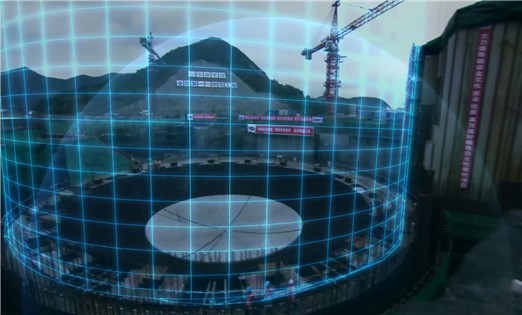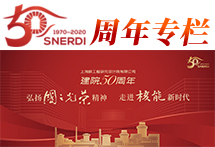头部高度
[ICONE25 ON AIR] Reality and Realization – Small Modular Reactors
Date:2017-07-15
Source:Presidents' Office and International Affairs
The R&D of Small Modular Reactor (SMR) has been heating up all over the world as one of the most concentrated topics in recent years. Under this circumstance, the 25th International Conference on Nuclear Engineering (ICONE25) held the forum on SMR to discuss the opportunities and challenges in this area.
The forum is chaired by Mr. Dantong Song from Nuclear Power Institute of China, and co-chaired by Mr. Nobuyuli Ueda from Central Research Institute of Electric Power Industry and Mr. Asif Arastu from Unisont Engineering.
Thorium Molten Salt Reactor (TMSR) – Strategic Pioneer Sci&Tech Project
Mr. Zhimin Dari from Shanghai Institute of Applied Physics, Chinese Academy of Sciences introduced the target, research progress and perspectives of TMSR in China. The TMSR initiated in 2011 as a strategic pioneer Sci&Tech Project. The objective of TMSR program is developing Th-Energy, non-electric application of nuclear energy based on TMSR during coming 20-30 years.
Th-U Fuel Cycle will be divided into 3 steps:
Step 1: online refueling and removing of gaseous FP to discharge all fuel salt
Step 2: reloading of U and Th to realize thorium fuel cycle
Step 3: continuous process to recycle salt, U and Th
The key technology and component development is expected to complete by 2018. In addition, the test reactors including 2MWth liquid fuel test reactor and 10MWth Solid-fuel test reactor are planning to get the licenses by 2020. In the future, larger reactors on demonstration projects and commercial ones will be developed to realize the near-term aims.
Advanced Pressurized Water SMR CAP200
Mr. Xujia Wang from Shanghai Nuclear Research & Design Institute (SNERDI) presented the multi-functional development of SMRs, the progress on SMRs in SNERDI and the technical features of CAP200.
CAP200 is one of the research and development of PWRs adopting passive engineered safety features initiated by SNERDI. Compared with large PWRs, CAP200 has a number of advantages such as higher inherent safety, lower frequency of large radioactivity release, longer time without operator intervention, smaller environment impact, and lower financial risks.
Molten Chloride Salt Fast Reactor (MCSFR)
Mr. Ed Pheil, the Chief Technology Officer and Founder of Elysium exposed the latest researches on MCSFR. He presented that Elysium chose a reactor design that is both compelling but can also be developed in a shorter period. Elysium Molten Salt Reactor is highly scaleable due to the flexible power and alternate configuration.
He concluded that MCSFR is passively safe and proliferation safe even with conversion of SNF & Pu or positive breeding for new reactor fuel. The closed fuel cycle of this reactor will be more flexible and simpler than current waste management technologies to ensure the security.
IAEA Nuclear Technology Development Activities for SMR Deployment
Mr. Matthias Krause from Division of Nuclear Power of IAEA shared his views on opportunities and challenges of SMRs, the designs of different reactors, the recent IAEA-NE publications and the ongoing and planned activities.
He deemed that the need for innovation, flexibility, lower capital cost, integration with renewable and non-electric applications make SMRs attractive and feasible.If the R&D gaps are closed, regulations for safety and safeguards are adapted or developed, the investors will finance Pilots or Prototypes of SMRs. And IAEA Nuclear Energy and Nuclear Safety departments are ready to offer support and lead co-operative efforts on SMRs for all members.
Experience Feedback and Safety Regulatory
Mr. Jovica Riznic from Canadian Nuclear Safety Commission thought the accumulated operation and maintenance experiences of existed reactors could also be applied to SMR. The basis for a risk-informed piping reliability analysis framework for SMR applications that builds on detailed knowledge of metallic piping reliability attributes and influence factors, the lessons learned from 45+ years of commercial reactor operating experience and the methodology for estimating piping reliability parameters.
He proposed that strong knowledge base exists for making informed projections about SMR-centric piping structural integrity projections. Insights from wide range of applications are essential and the recognition of lessons learned could serve back to the latest R&D.
Mr. Stewar Magruder from IAEA also emphasized the importance of experience feedbacks. He introduced the forum established by Canada, China, Finland, France, Korea, Russia, United Kingdom and United States, which aims at sharing regulatory experiences, capturing good practices and methods, interacting with key stakeholders and proposing changes if necessary to requirements and regulatory practices. He expected that the results and outcomes of the activity could enhance the understanding of MS in adopting appropriate approaches, methodologies and criteria for determining the technical basis for EPR arrangements, including EPZ, for SMR deployment.
The summit forum is an important component of ICONE25 cutting-edge technology in the application of nuclear power, which will provide important reference for the R&D, construction and regulatory of SMRs.




